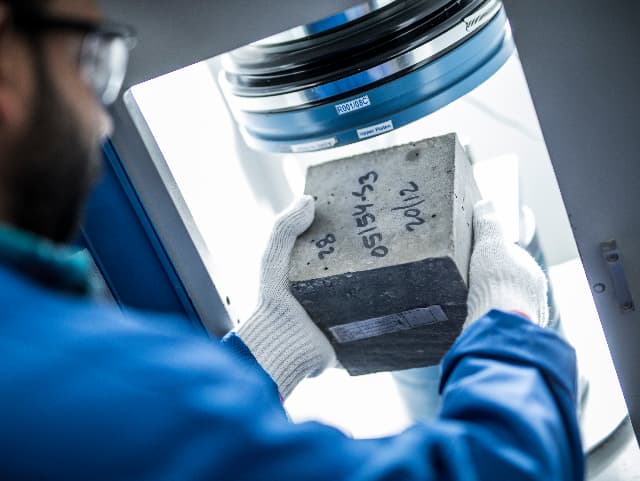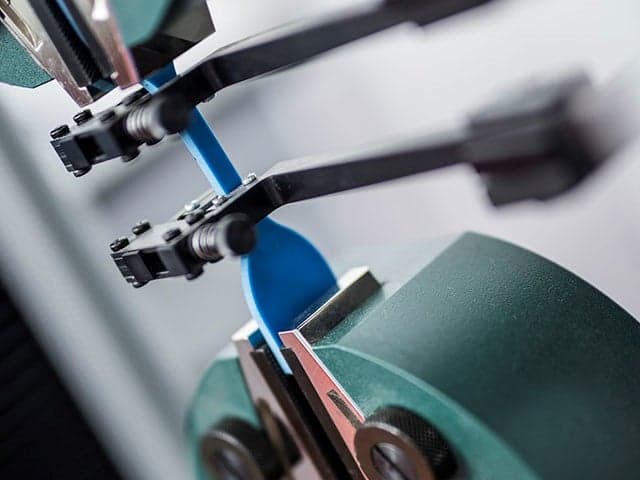Architectural Acoustics Testing
Navigate complex acoustic challenges with confidence through Element's comprehensive Architectural Acoustics Testing services. When noise pollution threatens building functionality or code compliance, our precise sound transmission and absorption testing helps you deliver spaces with exceptional acoustic performance and occupant comfort—before construction even begins.

What is Architectural Acoustics Testing at Element?
Architectural acoustics testing measures how building materials and assemblies perform in attenuating (reducing) sound transmission and absorbing sound. At Element, we provide laboratory and field testing services to precisely quantify acoustic properties using industry-standard metrics such as Sound Transmission Loss (STL), Sound Transmission Class (STC), Outdoor/Indoor Transmission Class (OITC), and Noise Reduction Coefficient (NRC). Our data helps you verify compliance with building codes and deliver environments with optimal acoustic performance.

What Can Element Offer You For Architectural Acoustics Testing?
Key tests offered
Key tests offered
Element delivers comprehensive acoustic performance evaluation through standardized testing methodologies that produce reliable, comparable results. Our testing capabilities cover both sound absorption and transmission properties, giving you a complete picture of your products' acoustic behavior.
- Sound Absorption Testing (ASTM C423, E795, ISO 354) to measure the ability of materials to reduce reflected sound
- Sound Transmission Loss Testing (ASTM E90, E423, E1332, AAMA 1801, ISO 10140)
- Field Testing (ASTM E336, E1007) to measure airborne sound insulation and impact sound transmission between rooms
- Noise Reduction Coefficient (NRC) determination
- Sound Absorption Average (SAA) calculation
- Sound Transmission Class (STC) rating
- Outdoor/Indoor Transmission Class (OITC) rating
- Field Testing
- Sound Transmission Loss Testing
- Sound Absorption Testing
Components and materials we test
Components and materials we test
Elements' A2LA-accredited laboratory tests the full spectrum of building products that impact acoustic performance. From structural elements like walls and floor-ceiling assemblies to specialized acoustic materials such as insulation and panels, we provide the data you need to make informed decisions about product selection and design strategy.
- Wall panels and assemblies
- Doors and windows
- Ceiling panels and systems
- Acoustic insulation materials
- Draperies and fabrics
- Glass and glazing products
- Highway and transportation barriers
- Office partitions
Methods and solutions offered
Methods and solutions offered
Our acoustic testing combines precision measurement with practical application. We perform reverberation chamber testing for sound absorption, assessing materials with Noise Reduction Coefficient (NRC) and Sound Absorption Average (SAA). For sound transmission, we use laboratory measurements for airborne sound loss, including Sound Transmission Class (STC) and Outdoor/Indoor Transmission Class (OITC). We also offer field testing for real-world acoustical performance, including airborne sound insulation and impact sound isolation. Our tests follow industry standards like ASTM C423, E795, ISO 354, ASTM E90, and ASTM E336 to ensure compliance and optimal performance.
Extended acoustic testing capabilities:
Beyond Element's acoustic testing services, we are able to offer additional specialized testing through our sister company, Warringtonfire. Their laboratory provides sound insulation performance testing up to 58dB (Rw) or 73dB (Rw) according to BS EN ISO 10140 series standards for a wide range of building elements including door sets, windows, glazing systems, and partition systems. This extended capability ensures you can access comprehensive acoustic performance evaluation for virtually any building component through the Element family of companies.
Cutting-edge equipment we use
Cutting-edge equipment we use
Element’s advanced reverberation chambers and acoustic testing facilities provide the precise and controlled environment necessary for accurate, repeatable results. Our equipment is calibrated to meet the most stringent standards, ensuring your test data will be accepted by building officials, clients, and regulatory authorities.
Which labs offer this service
Which labs offer this service
Element's facilities across North America, the UK, and Dubai, including key locations in St. Paul, Boxborough, Huntsville, Toronto, Warwick, and Dubai, feature full-service product and materials labs equipped with specialized architectural acoustics testing capabilities. These laboratories provide comprehensive acoustic evaluation services for fenestration, building materials, and complete assemblies, offering convenient access to expert testing for your projects worldwide.
Standards we test to and products we test
- ASTM C423: Standard Test Method for Sound Absorption
- ASTM E795: Standard Practices for Mounting Test Specimens
- ISO 354: Acoustics - Measurement of sound absorption in a reverberation room
- ASTM E90: Standard Test Method for Laboratory Measurement of Airborne Sound Transmission
- ASTM E423: Standard Test Method for Sound Absorption of the Noise Reduction Coefficient
- ASTM E1332: Standard Classification for Rating Outdoor-Indoor Sound Attenuation
- AAMA 1801: Voluntary Specification for the Acoustical Rating of Windows, Doors and Glazed Wall Sections
- ISO 10140: Acoustics - Laboratory measurement of sound insulation of building elements
- ASTM E336: Standard Test Method for Measurement of Airborne Sound Attenuation between Rooms
- ASTM E1007: Standard Test Method for Field Measurement of Tapping Machine Impact Sound Transmission
Sound Absorption Testing:
- Acoustic wall panels 123
- Baffles
- Ceiling panels
- Draperies
- Fabrics
- Highway and transportation barriers
- Insulation materials
- Office partitions
- Window fashions
Sound Transmission Loss Testing:
- Doors
- Draperies
- Fabrics
- Glass
- Highway and transportation barriers
- Insulation material
- Wall panels and assemblies
- Windows and window fashions
Field Testing:
- Wall assemblies
- Ceiling assemblies
- Floor assemblies
Your Challenges, Our Solutions
Meeting strict building codes
Controlling environmental noise pollution
Verifying performance before installation
Ensuring occupant satisfaction
Why Choose Element

Accredited testing facilities
Comprehensive testing capabilities
Laboratory and field verification
Industry-specific expertise
Frequently asked questions
What's the difference between NRC and SAA ratings?
Noise Reduction Coefficient (NRC) averages sound absorption at 250, 500, 1000, and 2000 Hz frequencies, while Sound Absorption Average (SAA) provides a more detailed evaluation using twelve one-third octave bands from 200 through 2500 Hz. SAA typically offers a more comprehensive assessment of a material's sound absorption capabilities.
When should I consider field testing versus laboratory testing?
Laboratory testing is ideal for product development and compliance verification before construction. Field testing becomes valuable after installation to confirm that assemblies perform as expected in actual buildings and to diagnose acoustic issues in existing structures.

Explore our global network of labs and find your nearest location
VIEW ALL LOCATIONSRelated services

Infrastructure Testing Services
Element provides industry-leading infrastructure testing services, helping construction and civil engineering projects improve safety, meet regulations, and optimize performance with expert analysis and advanced on-site laboratories.

Building Product Testing Services
Element delivers building product testing services to help you achieve regulatory compliance and global market access. Learn More.

Building Materials Testing
Get reliable building materials testing from Element. Ensure code compliance, reduce project risks, and avoid costly delays with expert laboratory and on-site services. Learn more.

Cladding and Facade Testing
Element provides expert cladding and facade testing to assess air leakage, water penetration, and structural integrity. Our advanced labs support compliance, energy efficiency, and long-term building performance.

Thermal Insulation Materials Testing Services
Element's expert thermal insulation materials testing services help you determine critical material properties for fibers, spray foams, and polystyrenes.

High Level Acoustic Noise Testing Services
Test aerospace and defense systems in our high-level acoustic noise testing reverberant chambers. Simulate launch conditions, engine noise, and airflow with precision controls. Meet MIL-STD-810 requirements.
